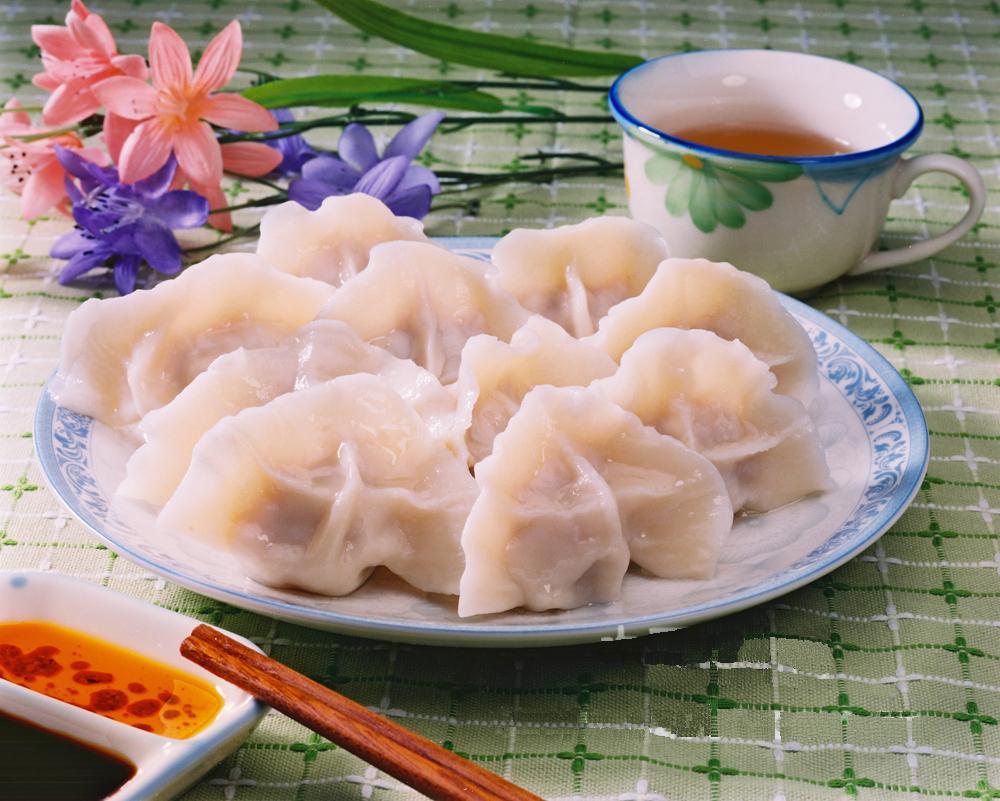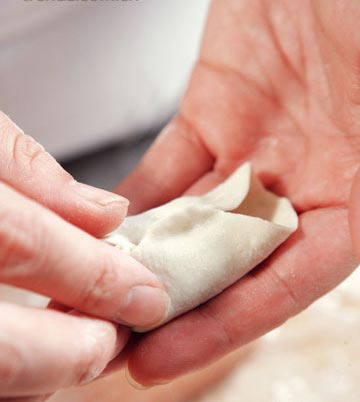1 Peking Opera @ Liyuan Theater
Venue: Liyuan Theater 梨园剧场
Address: 1/F Qianmen Hotel, 175 Yongan Road, Hufangqiao
Show time: 19:30-20:50 daily
Phone: 86-10-63016688
Ticket Price: RMB 180-680
Beijing tour offered by www.tourochina.com
Peking opera was extremely popular in the Qing Dynasty court and has come to be regarded as one of the cultural treasures of China. Li Yuan Theatre is more popular with tourists than with serious Chinese opera lovers. Here you will see Peking opera with English subtitles, Chinese acrobatics and some colorful dance performances. Try on a few opera costumes and put on some makeup to have yourself photographed as an opera artist.
2 The Legend of Kung Fu
Venue: Red Theater 红剧场
Add: Workers' Cultural Palace, 44 Xingfu Dajie, Chongwen District
Booking: 010-67103671/72/73
Show time: 19:30-20:30 daily
Ticket price: RMB 180-680
Beijing tours offered by www.tourochina.com
This wonderful mix of dance and Kung Fu arts would be a stunning experience for your China tour. The show focuses on a young boy found wandering outside an ancient temple in China, who dreams of becoming a Kung Fu master. As with all stories, things don't go exactly according to plan.
3 New Peking Opera: The Forbidden Love
Venue: Minorities Cultural Palace Theater 民族文化宫
49 Fuxingmen Neidajie, Xidan/Financial Street 复兴门内大街49号
Show time: 7:30 pm - 9:15 pm daily
Booking line: 86-10-66088077
Price: RMB 180, 280, 380, 480, 580
Beijing travel offered by www.tourochina.com
With innovative stage design, top of the line lighting and video equipment as well as fresh, modern choreography of acrobats and martial arts, this classic Peking Opera gets a make-over. The plot is essentially an adaptation of the Song dynasty folktale from Chinese mythology "Madame White Snake."
4 Folk Art Performances
Venue: Laoshe Teahouse 老舍茶馆
Add: 3 Qianmen Xidajie, Tian'anmen前门西大街3号
Tel: 86-10-63036830 63021717
Show time 19:50-21:20 daily
Price: RMB 180-380; some 310 seats. Reservation recommended in peak season.
http://www.laosheteahouse.com/
Beijing travel agency offered by www.tourochina.com
This nightly entertainment features a mix of traditional acrobatics, classic Beijing cross talk and Peking opera. You, and a room full of tourists, will be served by staff clad in traditional long gowns as you sip big bowls of tea and nibble on Beijing-style snacks. Photos of global leaders who have visited make this teahouse unique.
5 Beijing Night Show
Venue: No.1 Dayabao Hutong 北京之夜文化城
Show time: 19:30 daily
Price: RMB 280,320,380,480,680
Tel: 010-8008101282 65272814
Beijing tour operator offered by www.tourochina.com
A big-budget dance opera showing every evening at Beijing Night Show. Charming girls and masked warriors in the mysterious Yan Palace, heroic soldiers with burning war flames at the magnificent Great Wall, Kublai Khan bending his bow to break down the door of Beijing and overwhelming his dynasty with Tibetan Buddhism. The 90-minute dinner show will take you on a trek through time and space to discover the ancient and modern capital of Beijing.
6 Acrobatics show @ Tiandi Theater
Venue: Tiandi Theater 天地剧场
Add: No.10 Dongzhimen Nanjie
Show time: 17:30-18:40 and 19:30 -20:40 daily
Price: RMB 180, 280, 380, 480
Beijing tour offered by www.tourochina.com
The show covers a large variety of fields: acrobatics, aerial acts, farce, vocal imitations, magic, etc. The troupe is one of the best acrobatic circuses boasting of the largest scale and the most comprehensive programs in China. Repertoires like "Climbing the pole" and "Skills on a bike" are very popular.
7 Acrobatics show @ Chaoyang Theater
Venue: Chaoyang Theater 朝阳剧场
Add: 36, Dongsanhuan Beilu, Chaoyang District
Show time: 17:15-18:25 and 19:15-20:25 daily
Tel: 86-10-65068116
Ticket price: RMB 180-680
Beijing tours offered by www.tourochina.com
The theatre is a two-storied building with 1400 seats. Right from the Lion Dance to a seesaw performance, every acrobatic performance at this theatre is sure to hold you spellbound.
8 Peking Opera @ Huguang Guild Hall
Venue: Huguang Guild Hall 湖广会馆
Address: Hufang Lu 3,xuanwu District. Subway Line 2 Heping Men (exit D1); walk south 10 min
Show time: 19:30-20:45 daily
Tel: 86-10-63518284
Ticket price: RMB 180-380
http://www.beijinghuguang.com
Travel to Beijingoffered by www.tourochina.com
Built in 1807, at the height of its glory the Huguang Guild Hall was known as one of the "Four Great Theatres" of Beijing. Many famous past and present opera performers have performed here. Dr, Sun Yat-sen presided over the conference of the founding of the KMT in the guild hall in 1912. Peking Opera and many other local performances are shown here every day. The Huguang Guild Hall also contains a small museum which exhibits the theatre's rich history of Beijing opera.
9 Kun Qu Opera: The Peony Pavilion
Venue: The Imperial Granary 皇家粮仓
Add: Nanxincang, 22 Dongsishitiao, Chaoyang District
Show time: Every Friday and Saturday at 19:30
Ticket price: RMB 380, 580, 780, 980, 1980, and RMB 12000 for a 6-8 people compartment; A Cantonese-style buffet will be provided free for audience one hour ahead of the performance.
Tel: 86-10-64096499
Beijing tour offered by www.tourochina.com
Kun Qu, which has been enlisted as an item of UNESCO intangible world heritage, is one of the oldest forms of Chinese opera still performed today. This play, a love story as one of China's best-loved classical operas, was written in the Ming Dynasty and first performed in 1598. Today it is a regular performance, but only some 60 visitors admitted at the small but ancient Imperial Granary.
10 Mongolian dance and music shows
Venue: Tenggeli Tala 腾格里塔拉
Add: Xicui Lu, 1000m north of Shagou Lukou 西翠路, 沙沟路口北1000米路东
Tel: 86-10-68150808 68150706
Website: www.tala.com.cn
Show time: 19:30-20:30
Price: RMB 316 for night show and RMB 518 for VIP seats; RMB 188 for lunch show at 12:15-13:00.
Beijing tours offered by www.tourochina.com
A spectacular Mongolian dance, music performances plus mouthwatering grassland fare such as whole roasted sheep, as well as a generous buffet piled high with endless variations of mutton and salads. The theater restaurant’s performing troupe leave the audience stunned with their theme show of Ordos Wedding. The show displays the lives of the Mongolians, with talented singers, dancers and stunt performers - in one scene the bride and bridegroom come into the room on a camel!
Other shows out of the top ten
11 Face Changing Show 变脸
Venue: Baguobuyi Restaurant 巴国布衣
Add: 2/F, Nanhang Hotel, 10 Dongsanhuan Zhonglu, 东三环中路南航酒店2层
Tel: 86-10-65672188
Price: No ticket for the show, just order some food and watch.
Beijing tours offered by www.tourochina.com
It's not such a hot attraction for tourists but Baguo Buyi's two big draws -- its burning hot Sichuan cuisine and nightly face changing (bianlian in Chinese) show -- justify a visit. Bianlian is a fascinating component of Sichuan opera, where the performer magically whips through half a dozen or more fearsome and brightly-colored face masks seemingly by magic.
12 The Golden Mask Dynasty 金面王朝
Venue: OCT Theater in Beijing Happy Valley 欢乐谷
Show time: 19:30 daily (Suspended in winter)
Ticket: RMB200, 260, 320, 380, 680
Tel: 86-10-67383333-8825 67201818
Travel to beijingoffered by www.tourochina.com
This theater was specially designed for the large-scale show. Set in the Golden Mask Dynasty, a legendary age in China, the story tells how a queen who wears a golden mask creates a splendid dynasty through wisdom, tolerance, trust and boundless love. In eight acts it tells stories of war, bountiful pastures, the forging of metal, ceremonies, the moon, floods, fetes and illusions. They even produce an amazing real flood on the stage!
Other hot places for night shows
Beijing has three hot bar streets catering for both tourists and expats, and they are Houhai area, Sanlitun area and the new booming bar street at Naluoguxiang. Every night, live music works wonders on visitors.
Other places for Peking Opera
Peking opera was extremely popular in the Qing Dynasty court and has come to be regarded as one of the cultural treasures of China. Major performance troupes are based in Beijing and every day the capital has ten or more places shows available. Most Peking Opera plays are unintelligible to the untrained viewer, but they are usually based on folk tales, famous novels and fairy tales and are a pleasure to watch if you know the basic story. Some of the bigger theaters offer subtitles in English and Chinese so even if you don't know the story you can still follow along. Venues where you can see Peking Opera performances are listed as:
Chang'an Grand Theater 长安大戏院
Add: 7 Jianguomennei Dajie, Dongcheng District东城区建内大街7号
Tel: 86-10-65101309; 65101310 (Only in Chinese)
Website: www.changantheater.com
Ticket: 50-800 yuan
English subtitle available
Mei Lanfang Grand Theater梅兰芳大剧院
Add: 32 Ping'anli Dajie (southeast of Guanyuan Qiao), Xicheng District
西城区平安里西大街32号(官园桥东南角)
Tel: 86-10-58331288/1388
Experimental Theater of China National Peking Opera Company 国家京剧院实验剧场
Add: F6, Plaza of the China National Peking Opera Company 国家京剧院大厦8层
22 Ping'anli Xidajie, Xicheng District, Xizhimen 西直门, 西城区平安里西大街22号
Tel: 86-10-58519688/89
Opera House of the National Center for Performing Arts 国家大剧院
Add: No.2, West Chang'an Avenue, Xicheng District 天安门西
Tickets and Information: 86-10-66550000
Regal Palace Chinese Restaurant 秦乐宫中餐厅
Add: Panjiayuan (South East Third Ring Road) 潘家园
1/F, Days Hotel and Suites, 27 Huaweili, Chaoyang District朝阳区华威里27号长安戴斯大饭店1层
Show time: Not available until March
Tel: 86-10-87789888 ext 262
Beijing tour offered by www.tourochina.com





































 Chinese are Masters in the Art of Making Dumplings.You can try it at your home.
Chinese are Masters in the Art of Making Dumplings.You can try it at your home. vegetables. Of course, all this variety can be confusing.
vegetables. Of course, all this variety can be confusing. 
 in family, they know how to make dumplings.Especially good at making dumplings, particularly making skins, which is the hardest part of making dumplings.
in family, they know how to make dumplings.Especially good at making dumplings, particularly making skins, which is the hardest part of making dumplings. 
 cut it into 50 pieces. Use a rolling pin to roll each piece to a thin circle.
cut it into 50 pieces. Use a rolling pin to roll each piece to a thin circle. 










